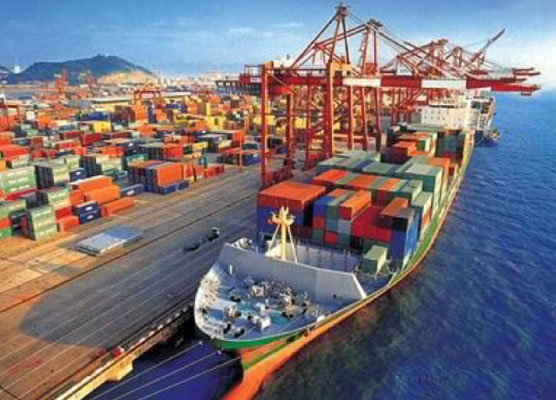GLOSSARY
The following are definitions of shipping terms used on this website as taken from various company’s prospectuses.
Annual Survey – The inspection of a vessel by a classification society, on behalf of a flag state, that takes place every year.
Bareboat Charter – Also known as “demise charter”. Contract or hire of a ship under which the ship-owner is usually paid a fixed amount of charter hire rate for a certain period of time during which the charterer is responsible for the operating costs and voyage costs of the vessel as well as arranging for crewing.
Bulk Carriers – Vessels which are specially designed and built to carry large volumes of cargo in bulk cargo form.
Bunkers – Heavy fuel oil used to power a vessel’s engines.
Capsize – A dry bulk carrier having a carrying capacity of 110,000 dwt to 199,999 dwt.
Charter – The hire of a vessel for a specified period of time or to carry a cargo for a fixed fee from a loading port to a discharging port. The contract for a charter is called a charter party.
Charterer – The individual or company hiring a vessel.
Charter Hire Rate – A sum of money paid to the vessel owner by a charterer under a time charter party for the use of a vessel.
Classification Society – An independent organization which certifies that a vessel has been built and maintained in accordance with the rules of such organization and complies with the applicable rules and regulations of the country of such vessel and the international conventions of which that country is a member.
Deadweight Ton-“dwt” – A unit of a vessel’s capacity for cargo, fuel oil, stores and crew, measured in metric tons of 1,000 kilograms. A vessel’s DWT or total deadweight is the total weight the vessel can carry when loaded to a particular load line.
Draft – Vertical distance between the waterline and the bottom of the vessel’s keel.
Dry Bulk – Non-liquid cargoes of commodities shipped in an unpackaged state.
Dry docking – The removal of a vessel from the water for inspection and/or repair of submerged parts.
Gross Ton – Unit of 100 cubic feet or 2.831 cubic meters used in arriving at the calculation of gross tonnage.
Handy Max – A dry bulk carrier having a carrying capacity of 40,000 dwt to 59,999 dwt.
Handy Size – A dry bulk carrier having a carrying capacity of up to approximately 39,999 dwt.
Hull – The shell or body of a vessel.
International Maritime Organisation-“IMO” – A United Nations agency that issues international trade standards for shipping.
Intermediate Survey – The inspection of a vessel by a classification society surveyor which takes place between two and three years before and after each Special Survey for such vessel pursuant to the rules of international conventions and classification societies.
ISM Code – The International Management Code for the Safe Operation of Ships and for Pollution Prevention, as adopted by the IMO.
Metric Ton – A metric ton of 1,000 kilograms.
Newbuilding – A newly constructed vessel.
OPA – The United States Oil Pollution Act of 1990 (as amended).
Orderbook – A reference to currently placed orders for the construction of vessels (e.g., the Panamax orderbook).
Panamax – A dry bulk carrier of approximately 60,000 to 79,999 dwt of maximum length, depth and draft capable of passing fully loaded through the Panama Canal.
Post-Panamax – A dry bulk carrier having a carrying capacity of 80,000 dwt to 109,999 dwt.
Protection and Indemnity Insurance – Insurance obtained through a mutual association formed by ship-owners to provide liability insurance protection from large financial loss to one member through contributions towards that loss by all members.
Scrapping – The disposal of old or damaged vessel tonnage by way of sale as scrap metal.
Short-Term Time Charter – A time charter which lasts less than approximately 12 months.
Sister Ships – Vessels of the same class and specification which were built by the same shipyard.
SOLAS – The International Convention for the Safety of Life at Sea 1974, as amended, adopted under the auspices of the IMO.
Special Survey – The inspection of a vessel by a classification society surveyor which takes place a minimum of every four years and a maximum of every five years.
Spot Market – The market for immediate chartering of a vessel usually for single voyages.
Strict Liability – Liability that is imposed without regard to fault.
Time Charter – Contract for hire of a ship. A charter under which the ship-owner is paid charter hire rate on a per day basis for a certain period of time, the shipowner being responsible for providing the crew and paying operating costs while the charterer is responsible for paying the voyage costs. Any delays at port or during the voyages are the responsibility of the charterer, save for certain specific exceptions such as loss of time arising from vessel breakdown and routine maintenance.
Ton – A metric ton of 1,000 kilograms.
Weighted Average Age – The weighted average age of a fleet is the sum of the age of each vessel in the fleet in each year from its delivery from the builder, weighted by the vessel’s dwt in proportion to the total dwt of the fleet for each respective year.
Very Large Ore Carrier (VLOC) – Very large ore carrier having a carrying capacity of more than 200,000 dwt.
Voyage Charter – Contract for hire of a vessel under which a shipowner is paid freight on the basis of moving cargo from a loading port to a discharge port. The shipowner is responsible for paying both operating costs and voyage costs. The charterer is typically responsible for any delay at the loading or discharging ports.


Office No. B-403, Shiv Chamber,
Plot No. 21, Sector 11, CBD Belapur,
Navi Mumbai – 400 614.
Tel. No.: +91-22-49744535
Hot Line: +91-8080800377
© 2019 VELOCITY MARITIME SERVICES PVT. LTD.
© 2019 VELOCITY MARITIME SERVICES PVT. LTD.